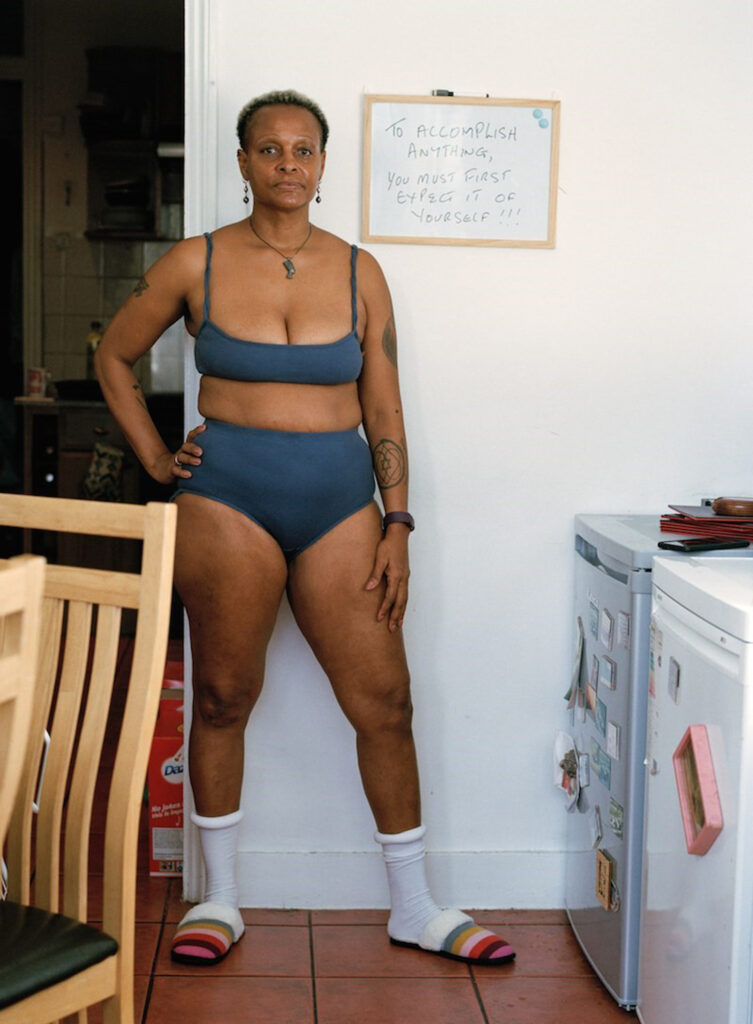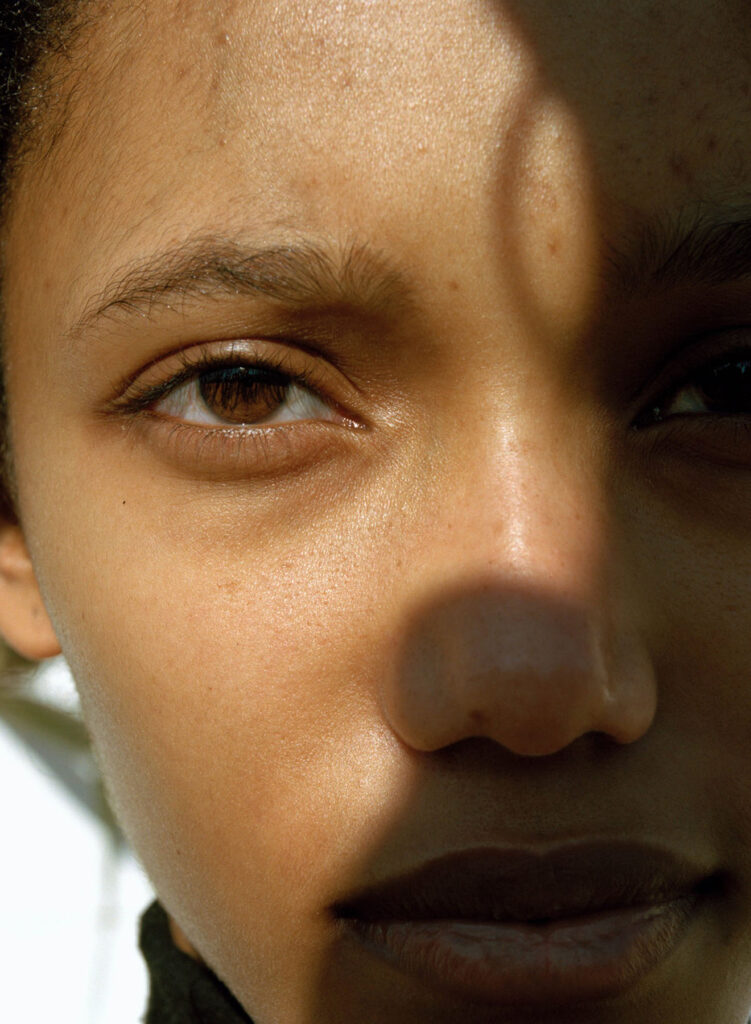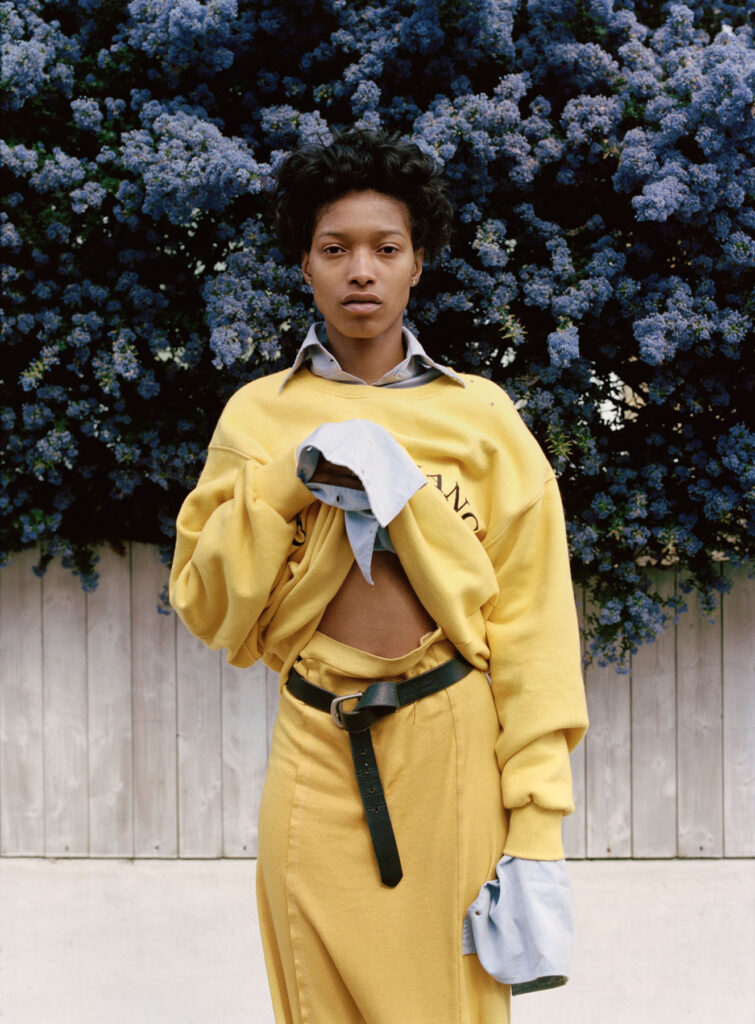Ronan Mckenzie

“I try to capture each person as they are”
Ronan Mckenzie’s photographs are imbued with the personal, a quality that transcends the nature of the project she’s working on. Be it personal work or commissions, there’s a warmth that Mckenzie manages to capture regardless. To that end, her recent cover for Teen Vogue featuring Serena Williams feels as intimate as, say, a portrait of her mum wearing the underwear brand Marieyat. It is this approach to photography that makes Mckenzie’s work so captivating and unique.
Speaking earlier this year at It’s Nice That’s series of talks, Nicer Tuesdays, Mckenzie remarked that her desires to pursue styling were quickly quashed upon the realisation that she ‘preferred faces, people and stories’ to clothing. If this explains the beauty of her photographs, then it also points towards the underlying focus that spurs her practise on behind scenes. Mckenzie has taken to task the industries within which she works, exposing and unpicking the narrow vision ingrained in the realms of art, fashion and publishing that still fail to incorporate a broad range of voices. In 2015, for example, Mckenzie’s first exhibition, A Black Body, sought to normalise the diverse possibilities in what it means to be black; a year later, the first issue of her magazine Hard Ears challenged the prevailing obsession with youth culture.
Towards the end of last year, she curated her second exhibition: I’m Home at Blank100, hosted in a purpose-built space with a series of interactive events explored the idea of ‘home’ through the lens of the black experience. At stake in Mckenzie’s work is a critically-engaged, and engaging, approach to shaping of the future – one that is both too enchanting and important to miss.

NR: Your work showcases an honest representation of personal experience by challenging homogeneous representations of ‘black, female, British’; what can the industries you work within do more effectively to counter these approaches?
Ronan Mckenzie: I think the only way to truly be representative, and by that I mean showcasing a diverse cross-section of stories, is to include a more diverse cross-section of people both behind the scenes and visibly.
NR: In the case of both Hard Ears and I’m Home, you have created a platform that wasn’t already available; did you ever aspire to becoming an editor and a curator, respectively, or are these projects that you’ve taken on out of necessity?
RM: I guess you could say I’ve taken them out of necessity for myself, not because any one else made me, but because I needed the platforms to be there so took it upon myself to make them happen. There was never really a moment with either project that I said ‘Ok, I’m going to be an editor (/curator) now’. Those were just the titles that afterwards summarised best what my roles were within those projects. For me, the action part is so much more important than the title, and I was prepared to and excited to take the actions I needed to achieve what I wanted to exist.
NR: What inspires the way you photograph people? Does it change from person to person?
RM: Yes, each person I photograph inspires the way that I photograph them by offering something completely different. I try to capture each person as they are, so that can change drastically depending on the type of person they are and in which way I connect and communicate with them.
“I try not to have a set idea of what I’m aiming to achieve with each person and instead let them lead the way.”

NR: How do you create a sense of tactility and warmth that is present in your work?
RM: I guess that what is visible is the honest sense of warmth and care that was present when the images were being made.
NR: What is the one, most significant thing that you hope to see change in the art and fashion industries in the future?
RM: Artists to be paid fairly for their work every time an institution/brand/platform will value monetarily from it.
Designers
- Mamu
- Ashanti
- Zen